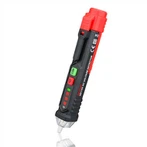How much do you know about the types of thickness gauges?
A thickness gauge is an instrument used to measure the thickness of materials or objects. It is often used in many industrial productions to continuously or randomly measure the thickness of products. Various rays are used in these instruments. The advantage of these rays is a wave thickness thermometer that does not utilize changes in ultrasonic frequency. There are many types of this kind of equipment, and different types of thickness gauges have many applications in life. Let's take a look at the applications of different types of thickness gauges in life?
Thickness gauge type one: laser thickness gauge. The principle used by this instrument is the reflection of laser light. According to the introduction of some technicians, this principle is very closely related to the principle of light reflection. In optical principles, it is related to the qualitative analysis of microscopic geometry. . It is a non-contact dynamic measurement instrument. It can directly output digital signals, can also be connected to a computer, can quickly process data, and can also output deviation values to various industrial equipment.
Type 2 thickness gauge: X-ray thickness gauge. This type of thickness gauge uses X-rays to penetrate the object being measured. The intensity change of X-rays and the thickness of the material show certain characteristics. The main applications of this thickness gauge in industry mainly include plate and strip processing of non-ferrous metals, as well as plate and strip processing in the metallurgical industry. This thickness gauge is a non-contact dynamic measuring instrument. The controller it uses is PLC and industrial computer as the core.
Thickness gauge type three: ultrasonic thickness gauge. There is a kind of wave in our lives called ultrasonic. This instrument is made of ultrasonic waves. The reflection principle it uses is the ultrasonic reflection principle to measure thickness. The probe will emit the measured signal to a certain extent. The signal will be reflected after passing through the object. After the reflection, the probe will receive it to a certain extent. After receiving it, certain calculations can be performed based on the time difference.






